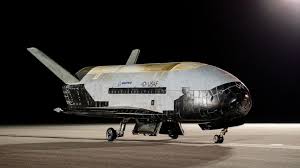
Breaking News
 Horror Israeli Intel Database Reveals 83% Killed In Gaza Are Civilians!
Horror Israeli Intel Database Reveals 83% Killed In Gaza Are Civilians!
 Aaron Lewis on Being Blacklisted from Radio & Why Record Labels Intentionally Promote Terrible Music
Aaron Lewis on Being Blacklisted from Radio & Why Record Labels Intentionally Promote Terrible Music
 The Number of Housing Units Under Construction Continues to Crash
The Number of Housing Units Under Construction Continues to Crash
 U.S. Federal Reserve's New Supervision Chief Sold on Bringing Crypto to Finance
U.S. Federal Reserve's New Supervision Chief Sold on Bringing Crypto to Finance
Top Tech News
 Video Games At 30,000 Feet? Starlink's Airline Rollout Is Making It Reality
Video Games At 30,000 Feet? Starlink's Airline Rollout Is Making It Reality
 Automating Pregnancy through Robot Surrogates
Automating Pregnancy through Robot Surrogates
 SpaceX launches Space Force's X-37B space plane on 8th mystery mission (video)
SpaceX launches Space Force's X-37B space plane on 8th mystery mission (video)
 This New Bionic Knee Is Changing the Game for Lower Leg Amputees
This New Bionic Knee Is Changing the Game for Lower Leg Amputees
 Grok 4 Vending Machine Win, Stealth Grok 4 coding Leading to Possible AGI with Grok 5
Grok 4 Vending Machine Win, Stealth Grok 4 coding Leading to Possible AGI with Grok 5
 Venus Aerospace Hypersonic Engine Breakthroughs
Venus Aerospace Hypersonic Engine Breakthroughs
 Chinese Scientists Produce 'Impossible' Steel to Line Nuclear Fusion Reactors in Major Break
Chinese Scientists Produce 'Impossible' Steel to Line Nuclear Fusion Reactors in Major Break
 1,000 miles: EV range world record demolished ... by a pickup truck
1,000 miles: EV range world record demolished ... by a pickup truck
 Fermented Stevia Extract Kills Pancreatic Cancer Cells In Lab Tests
Fermented Stevia Extract Kills Pancreatic Cancer Cells In Lab Tests
SpaceX launches Space Force's X-37B space plane on 8th mystery mission (video)

The latest mission of the U.S. Space Force's mysterious X-37B space plane is underway.
The robotic X-37B lifted off atop a SpaceX Falcon 9 rocket from NASA's Kennedy Space Center (KSC) in Florida tonight (Aug. 21) at 11:50 p.m. EDT (0350 GMT on Aug. 22).
The Falcon 9's first stage returned to Earth as planned 8.5 minutes later, touching down at Cape Canaveral Space Force Station, which is next door to KSC. The rocket's upper stage, meanwhile, continued carrying the X-37B toward low Earth orbit, where the space plane will do a variety of work, some of it quite hush-hush. It's unclear when and exactly where the X-37B will be deployed; SpaceX ended its launch webcast just after rocket landing, at the Space Force's request.
The 29-foot-long (8.8 meters) X-37B looks like a miniature version of NASA's now-retired space shuttle orbiters. The Space Force is believed to have two of the uncrewed vehicles, both of which were built by Boeing.
The X-37B serves primarily as a testbed for sensors and other technology that the military wants to check out in Earth orbit, which explains the space plane's other name — the Orbital Test Vehicle (OTV). Much of this gear is classified, so we usually get just a partial picture of X-37B payloads and activities in the final frontier.
The military has given us such a snapshot about the coming mission, which is known as OTV-8. The payloads going up are "next-generation technologies including laser communications and the highest-performing quantum inertial sensor ever tested in space," Space Force officials wrote in a July 28 statement.
A quantum inertial sensor is an instrument that allows spacecraft to gauge their acceleration, rotation and velocity using the principles of quantum mechanics.
"This technology is useful for navigation in GPS-denied environments and consequently will enhance the navigational resilience of U.S. spacecraft in the face of current and emerging threats," the July 28 statement reads. "As quantum inertial sensors would be useful for navigation in cislunar [Earth-moon] space, they additionally promise to push the technological frontiers of long-distance space travel and exploration."
"This technology is useful for navigation in GPS-denied environments and consequently will enhance the navigational resilience of U.S. spacecraft in the face of current and emerging threats," the July 28 statement reads. "As quantum inertial sensors would be useful for navigation in cislunar [Earth-moon] space, they additionally promise to push the technological frontiers of long-distance space travel and exploration."

 3D printing set to slash nuclear plant build times & costs
3D printing set to slash nuclear plant build times & costs

